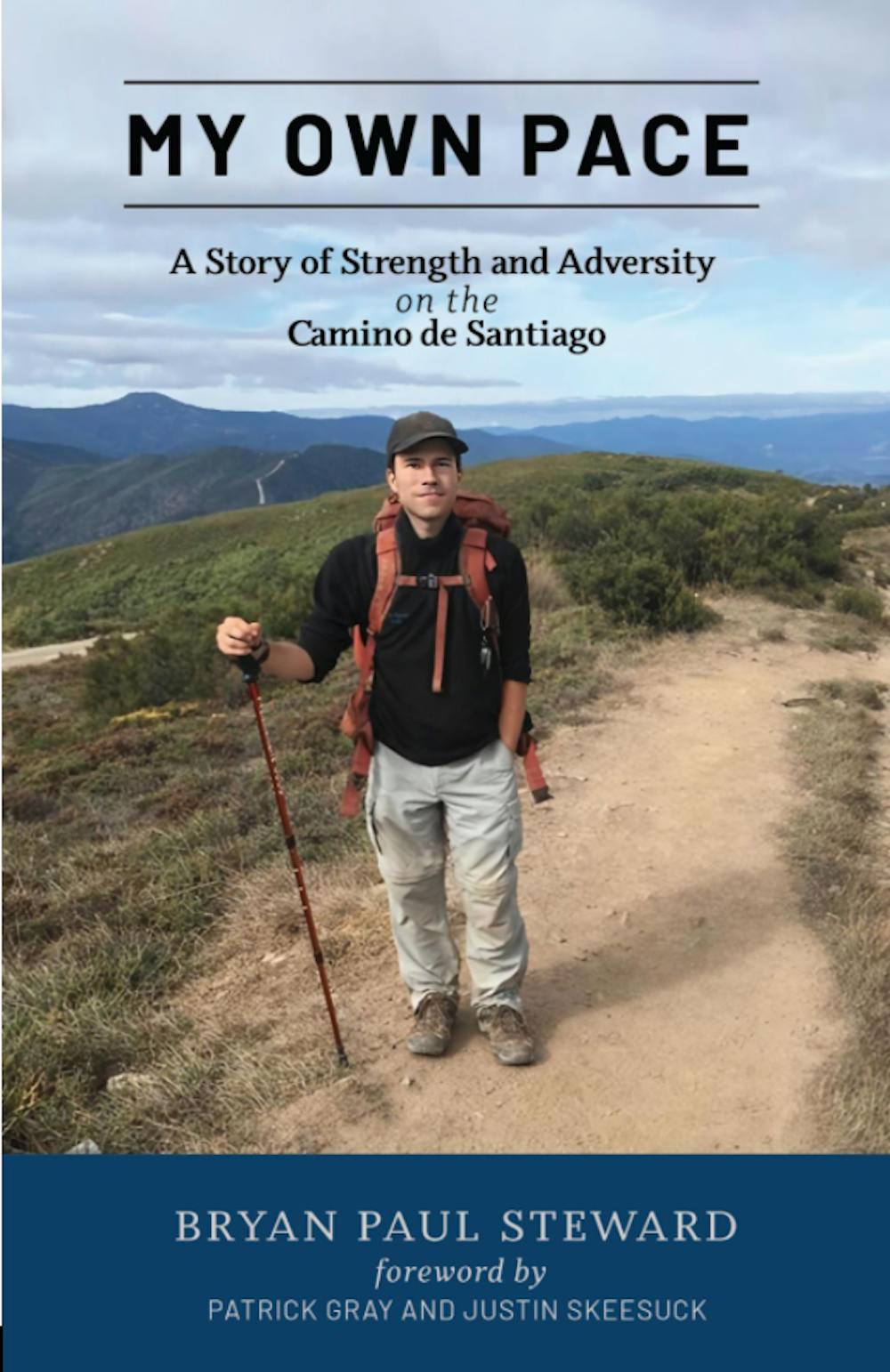By Rebecca Heath
Arts & Entertainment Assistant Editor
In August 2017, College alumnus Bryan Steward flew to Spain and embarked on the Camino de Santiago, a 500-mile pilgrimage stretching from Madrid to Galicia.
Nearly five years after he set off, Steward recounted his trek in his book, “My Own Pace,” published on Feb. 19.
Though he faced a number of challenges throughout his journey — including a severe case of food poisoning — Steward’s greatest obstacle is Becker Muscular Dystrophy (BMD): his rare, progressive neuromuscular disease.
“It's definitely ill-advised for people with a neuromuscular condition to push themselves because my muscles aren't as strong, and if I damage them, I could possibly damage my muscles beyond repair,” he said. “So it was a matter of pacing myself, not pushing myself too hard.”
Steward, who experiences challenges climbing stairs and lifting heavy objects as a result of BMD, said his desire to embark on the 46-day hike stemmed from the anticipation that his disease will continue to progress.
“I realize that as I get older in age, I'm gonna have more issues, and I will most likely be in a wheelchair at one point later in my life,” Steward said. “The inspiration behind the walk was just wanting to be active and enjoy being able to do things while I still can — even if it's difficult for me.”
Though his 500-mile journey through the Camino de Santiago marks his longest trek to date, the 2016 graduate is no stranger to challenging himself physically and pushing the boundaries of his condition. In 2015, Steward, who at the time was studying communications at the College, hiked 48 miles from Bordentown to Sea Girt along with another student battling a neuromuscular disease, in an effort to raise awareness for a since-dissolved student organization called STAND.
“When I did that, I realized I wanted to do a bigger walk one day,” Steward said.
At the spiritual midway point in the journey across the camino, hikers have the opportunity to participate in the tradition of placing a small rock from their hometown at the foot of a statue to symbolically leave behind their burdens. Because Steward cannot leave his neuromuscular disease behind, he decided instead to take a rock and swap it for the “truth,” subsequently choosing to embrace his burden.
“I’m going to have to carry [my condition] with me for the rest of my life,” Steward said. “The burdens you have in life you can't always choose, but you can choose how you carry them.”
In an effort to promote the story of a man who pushed his friend with muscular dystrophy in a wheelchair across the Camino de Santiago, Steward wrote blog posts for the Muscular Dystrophy Association throughout his own journey, where he detailed his experiences. After receiving an abundance of support, Steward decided he would eventually condense the most memorable parts of his trek into a book.
“While I was keeping that blog, people were really inspired by it and everything that I had to say and my journey and I was like, ‘I'd like to turn this into a book one day,’ so I kept a journal while I was on the camino,” he said. “That was kind of the basis of what eventually became my book after dozens of rewrites and edits.”
Steward said his book highlights the places along the journey that challenged him, the times he overcame the most and the people who helped him along the way. The title, ‘My Own Pace,” was inspired by reassuring words from a complete stranger on the trail after Steward expressed his frustration for not being able to keep up with other pilgrims.
“He said ‘there's no such thing as slow in the camino, there's only your own pace,’ and it clicked at that point,'' Steward said. “Focusing on your own pace was how I was going to be able to do this, focusing on just that next step, not worrying about being too slow compared to other people. What he said kind of set my mindset for the rest of the journey going forward.”
Finding his own pace shaped Steward’s 500-mile journey, and ultimately became the theme of his book. But according to Steward, that message extends beyond the camino.
“(Finding your own pace) is not just the message for the camino, that's something in life for everyone,” Steward said. “Everyone has challenges, things they have to overcome, and the only way to get through them is by focusing on your own pace.”
“My Own Pace” is available here for purchase on Amazon.







